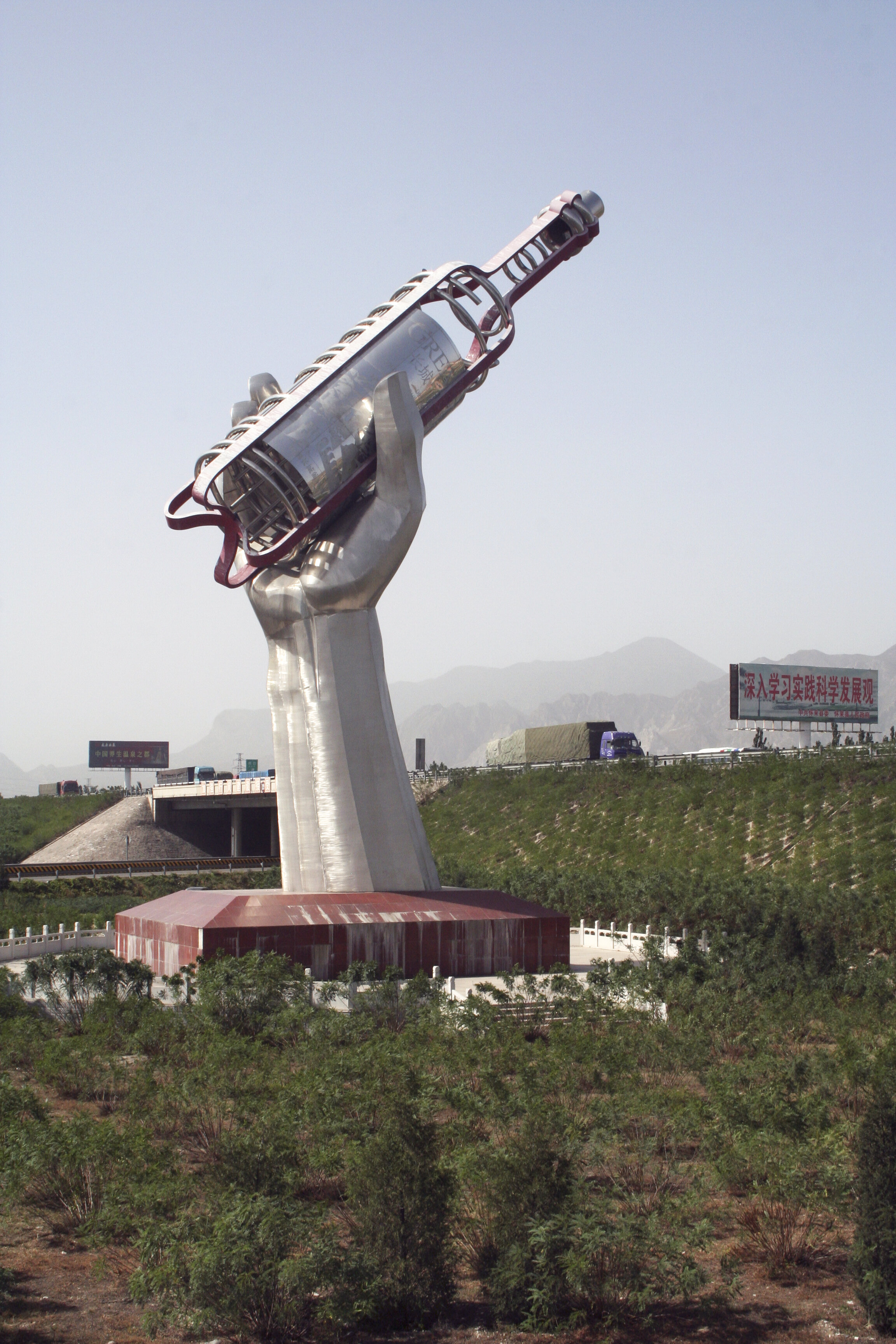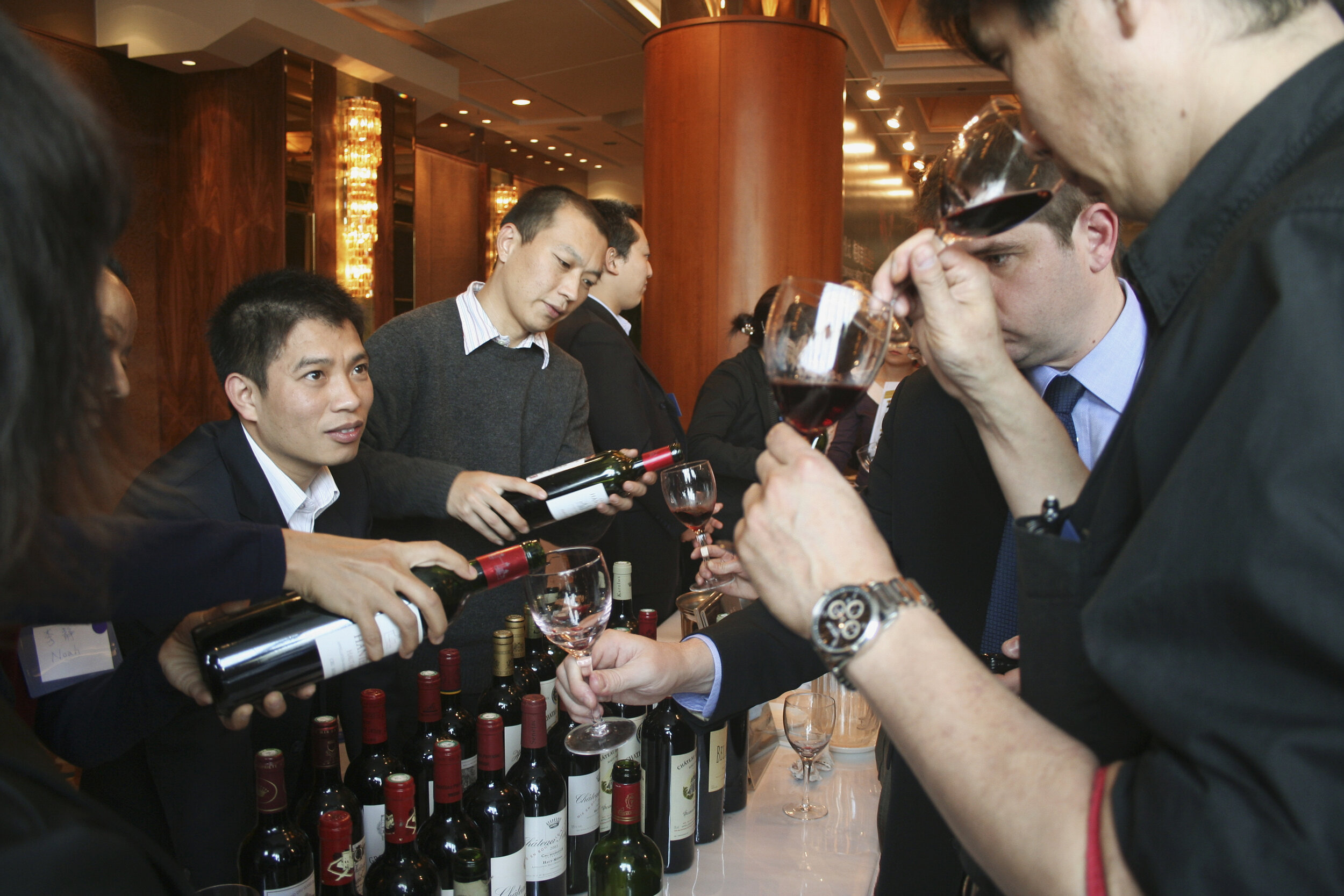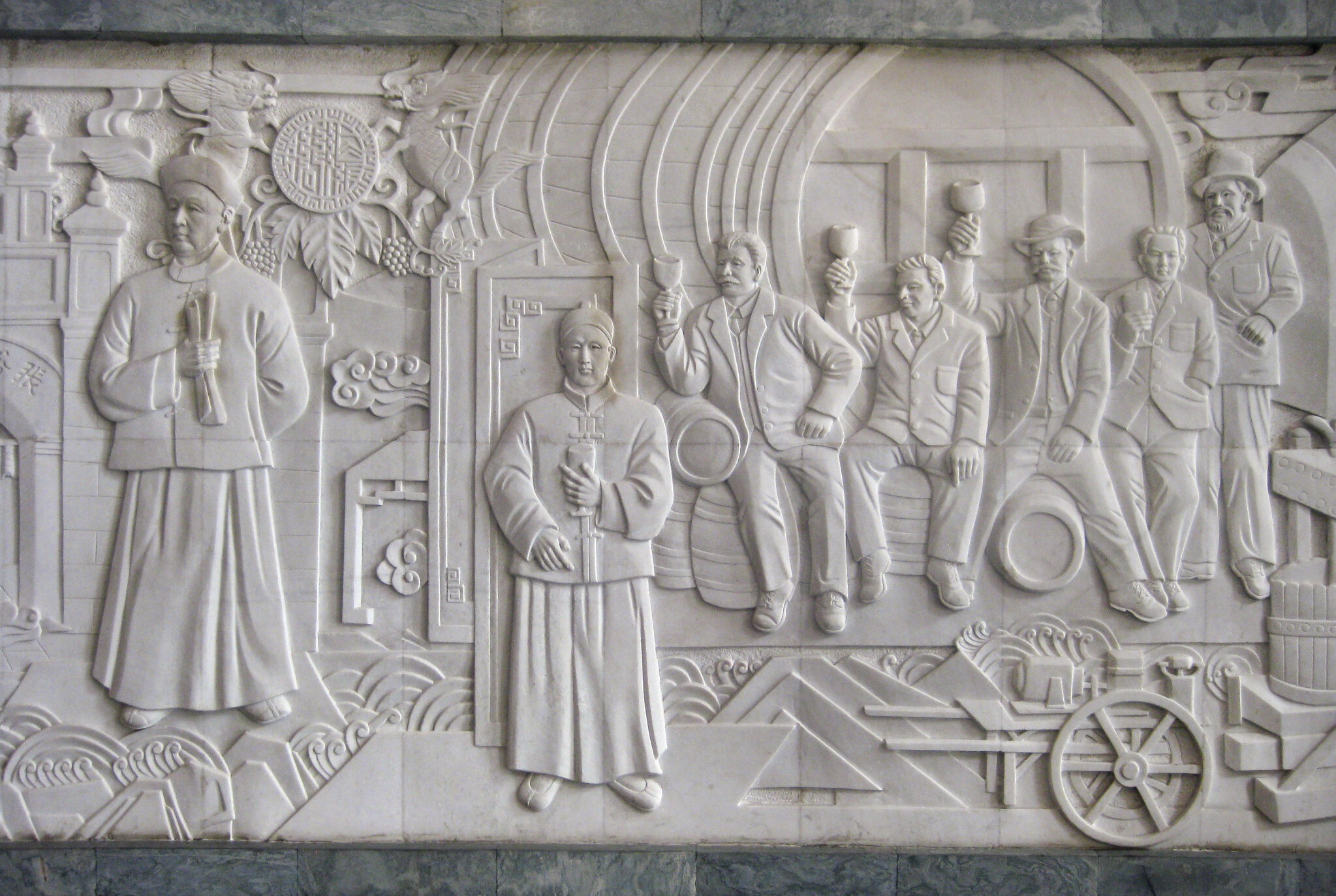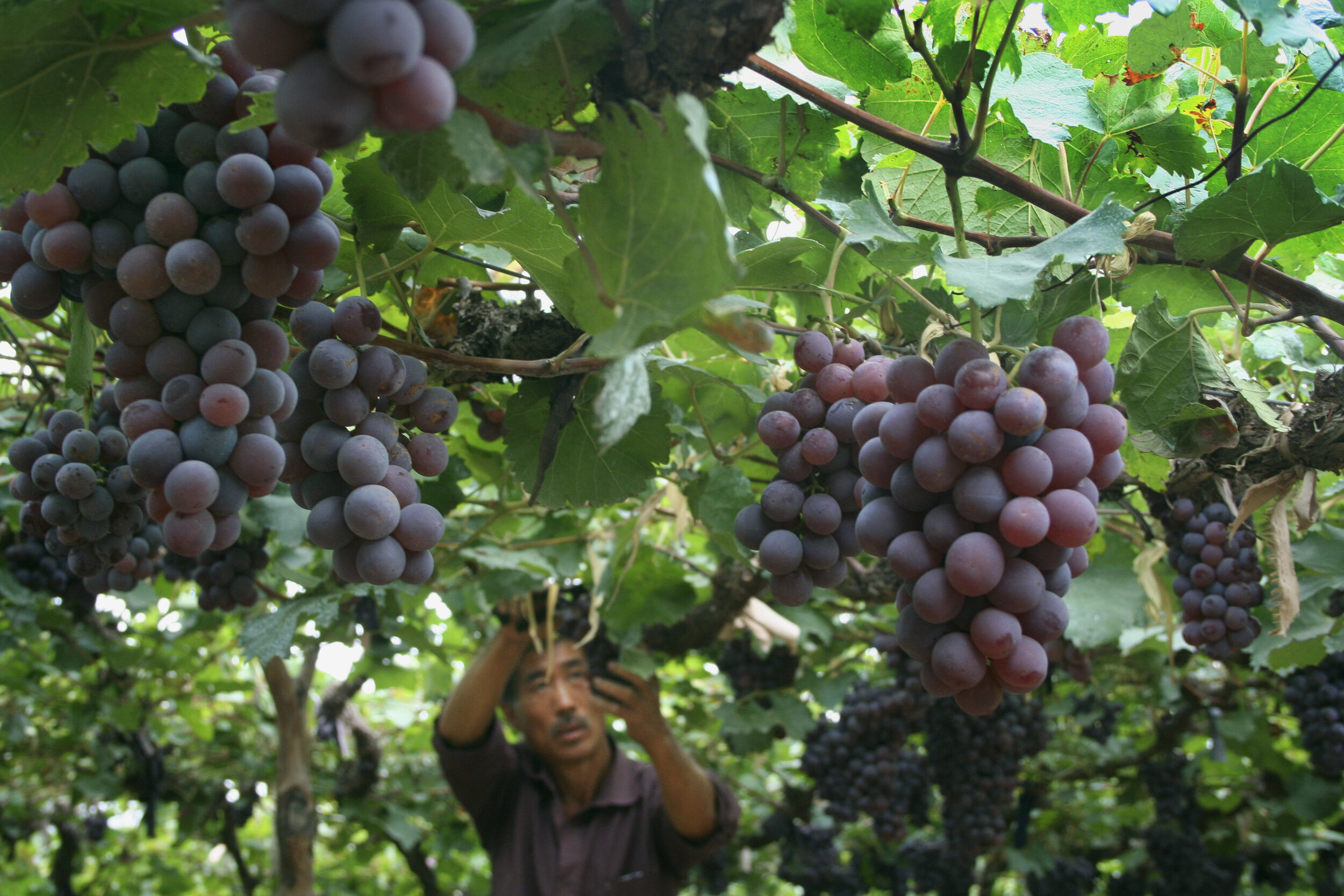“Ganbei Your Ganhong 干杯你的干红:
Tales, Imagery, and the Cultural Implications of Wine in China”

Bodega Langes - Hebei Province

Statue at entrance to Huailai County, "Silicon Valley of Wine" - Hebei Province

Picking grapes at Des Champs - Hebei Province

Picking grapes at Des Champs Vineyards - Hebei Province

Des Champs Vineyards - Hebei Province

Bodega Langes - Hebei Province

Bottle with fake dust at Shibaixuan - Hebei Province

Sino-French Chateau - Hebei Province

3rd International Wine Festival in Yantai - Shandong Province

Wines of Medoc Tasting - Beijing

Art at Changyu Wine Museum - Shandong Province

Pickers at Grace Vineyards - Shanxi Province

Picking grapes, both table grapes and wine - Hebei Province
Wine offers a unique and opportune lens for exploring modern China and certain elements of globalization. Before either beverage or intoxicant, wine is first a loaded symbol, permeated with connotations of luxury, refinement, and at times bearing an almost talismanic quality. In China, where objects and activities are often more about the message than the medium, the adoption of a wine culture reveals more than just new patterns of consumption, but new modes of self-expression.
It also provides a means for both local and national identity construction that up until recently were economically impossible and politically intolerable. Now as the reforms of the 1970’s take greater root in society, people in China of varying social stratums are embracing foreign luxuries, such as wine, with an air of acquired cosmopolitanism - while simultaneously fostering a distinct sense of national power and fulfilled entitlement. In this way the idea of wine in China caters to a larger discussion, suggesting more than the mere diversification of the country’s culinary repertoire.

